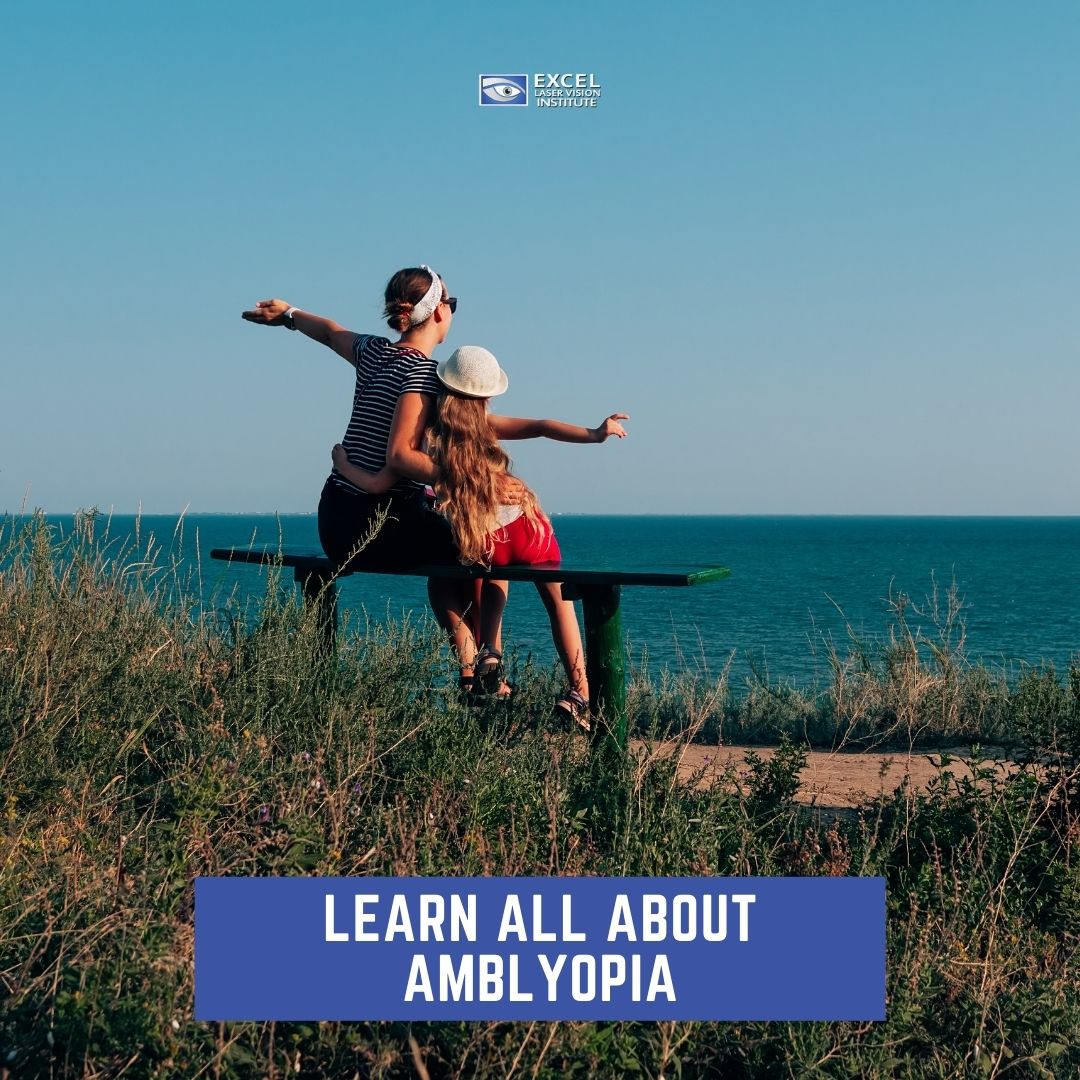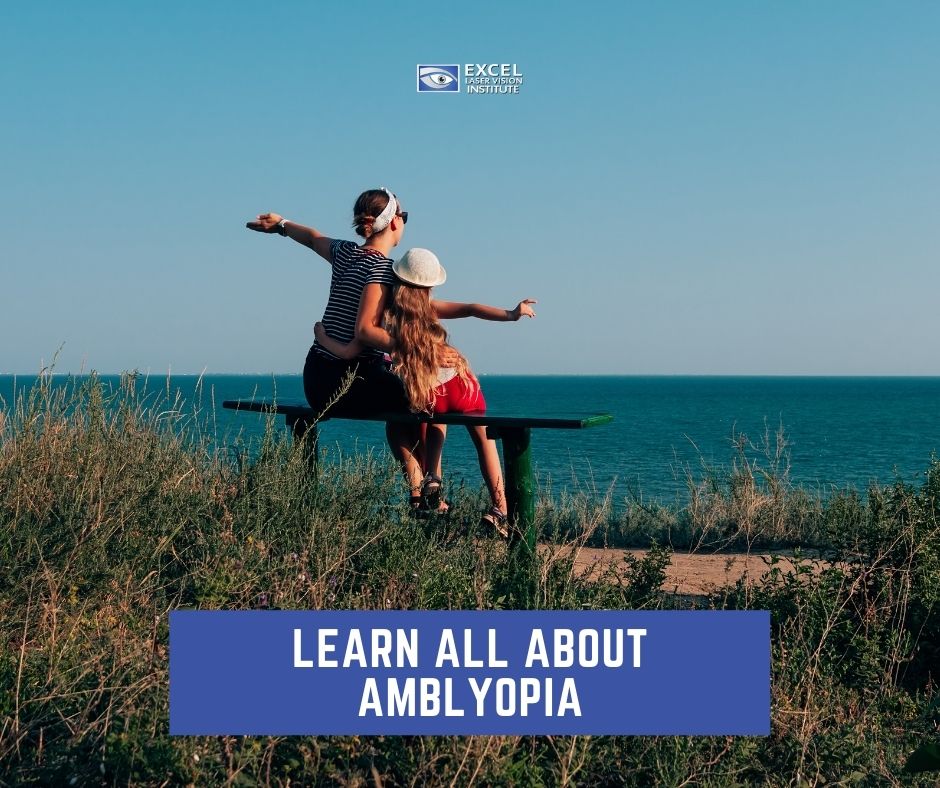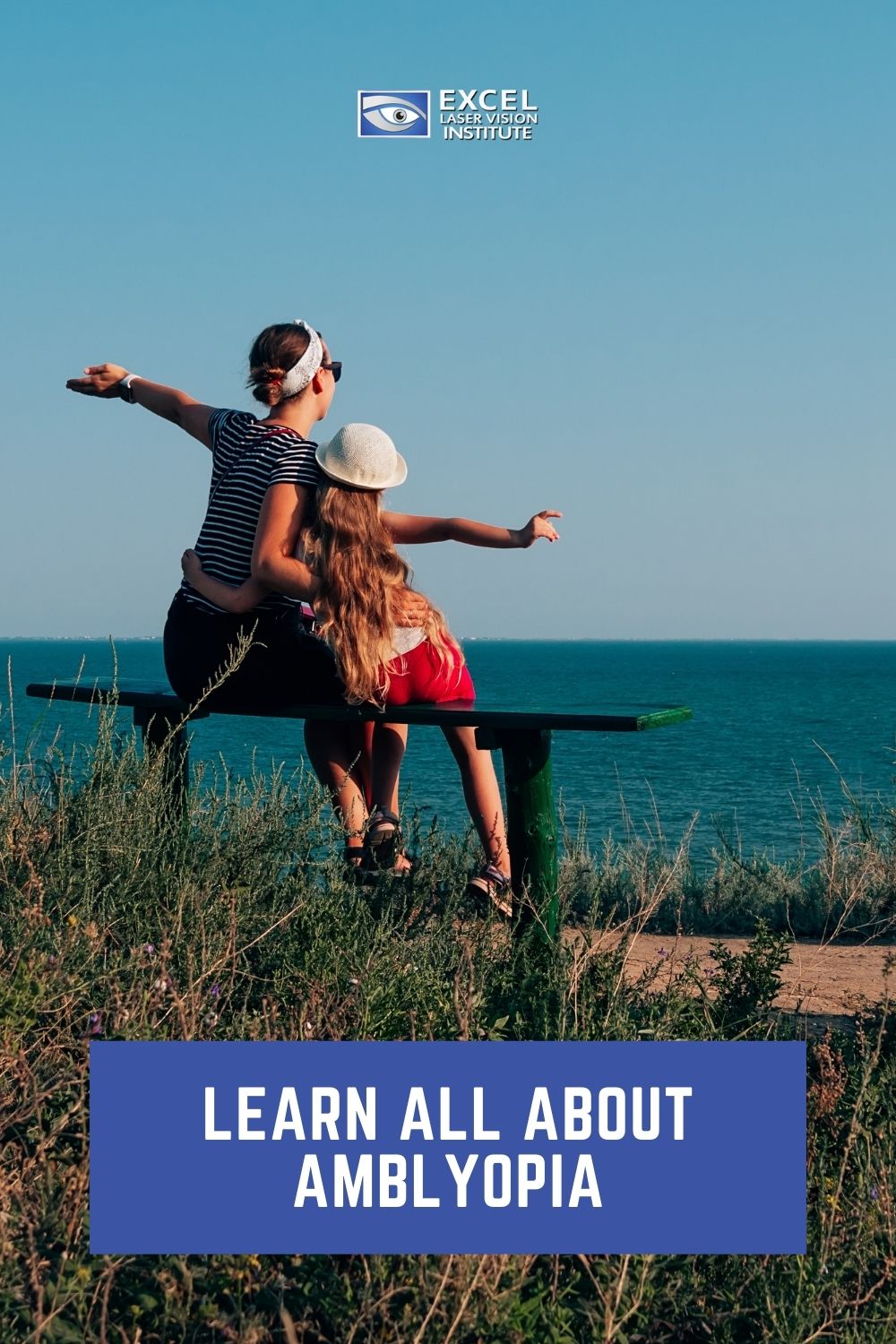
Amblyopia, commonly known as “lazy eye,” is a relatively common eye condition that develops in children between birth and 7 years, but will typically appear before age 5. Typically, a person will have one lazy eye, and it is estimated that up to 3% of the American population has the condition. As Los Angeles LASIK specialists, we want you and your family to stay informed on eye conditions that may be affecting you or your loved ones. If you have a family history of amblyopia and are concerned your child may be experiencing the condition, it is important you get familiar with the risk factors and know when it’s time to seek medical help.
Amblyopia occurs when a person’s brain favors their better eye, resulting in the other eye’s vision becoming blurry. A person’s weaker eye is apparent to others and can result in embarrassment among peers. It is the most common cause of vision loss in children. Lazy eyes can be the result of multiple pre-existing conditions. If your child was born prematurely, was smaller than average (less than 20 inches) at the time of birth, or has any developmental disabilities, then the chances of them having amblyopia increases. A lazy eye may also be caused by a squint, known in the medical world as strabismus, a droopy eyelid (ptosis), or a cataract (clouding of the eye lens).
It is very important to receive treatment for your child’s lazy eye as soon as possible, as neglecting to do so can result in blindness. All children ages 3-5 should be getting their vision checked at least once and will be able to detect any vision problems present in your child. Treatment for amblyopia is also far more effective in children than in adults.
There are multiple treatments that can be used for a lazy eye, including:
Glasses
As you are most likely already well aware, glasses are typically used to help people with nearsightedness or farsightedness, so while some people with a lazy eye use glasses, it is not the only form of treatment they must use.
Patches
Patches must be worn between 3-6 hours a day and are applied on your stronger eye. This will help get the weaker eye working better, but the treatment does not work overnight and can even take years for the necessary effects to kick in. Following the patch, surgery may be necessary.
Eye drops
These are recommended above patches, as you only need to use the drops once a day. Not only is it less distracting than wearing a patch, but according to the study, “atropine treatment did affect visual acuity in the sound eye at six months more than did patching.”
Under the Food and Drug Administration, LASIK surgery is not approved for children under 18 years of age. The shape of your child’s cornea (the clear, protective outer layer of the eye) is still developing until they reach adulthood, and proceeding with LASIK surgery will result in undesirable outcomes later in their life. It is also worth noting that most adults who do undergo laser eye surgery in Los Angeles will need to continue to wear glasses after their procedure.
As a parent, your child’s well-being is of your utmost concern. At Excel Eye, Dr. Moosa and his entire team are committed to the highest quality eye care for you and your entire family and assist you with any reservations you may have about your eye health. As we like to say, our patients are a part of our family – so if you’re ready to join our happy family today, don’t wait another day! Get in touch with one of our offices right now! We have respective offices in Los Angeles and in Orange County.
Give us a call today at (866) 923-9235.





